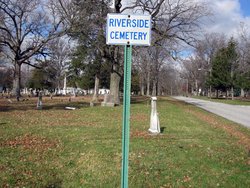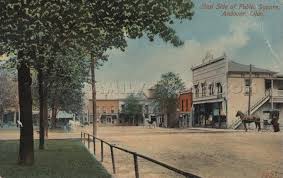


It was on the 10th day of March A.D. 1825, that I first stood on the banks of the Maumee River; having arrived on the morning of that day in Defiance, at that time the county seat of Williams County. I was then in the twenty-third year of my existence in this world; and just married and hunting a location, and I found one; although in quite destitute condition but perfectly healthy, and found plenty to do, such as boating, chopping, and felling trees, as there was plenty of that to do. At that time Defiance was quite a small village containing one small store, one tavern, and some five or six families. Isaac Hull kept a store on the north side of the Maumee River opposite Defiance, and done quite an extensive trade with the Indians.
Williams County was organized in 1824 and had Henry, Putnam and Paulding counties attached to it for judicial purposes. John Perkins, Pierce Evans and Robert Shirley, father of the late Judge Shirley, were the first Associate Judges. Dr. John Evans, Clerk; William Preston, sheriff; George Lantz, Auditor; and Robert Wasson, Treasurer. The first township organized above Defiance was Delaware, named after an old Indian town of that name. Among the first settlers of what is now Delaware township, in Defiance county, were Montgomery Evans, William Snook, Thomas Warren and Samuel and Denison Hughs who settled in 1823-24. Soon after, G.W. Hamilton and Jacob Platter moved in. The first death that occurred was Andrew Platter, son of Jacob Platter. The two first, Justices of the Peace elected were Oliver Crane and Montgomery Evans. The next township organized was Crane, which extended south and west from Delaware township to the State Line. The township derived its name from Oliver Crane, he having been one of the first settlers of the township. among the early settlers of what is now Crane township, in Paulding county, were Oliver Crane, William Gordon, Ephraim Seley and Samuel Reynolds, who settled in 1823-24. Samuel Gordon and Denison Hughes, moved on in the early part of 1825. The first Justices of the Peace elected, were Thomas P. Quick and H.N. Curtis. The first marriage that took place in what is now Crane Township, was solemnized by Oliver Crane, who joined in holy wedlock a Mr. Young to Miss. Sherry. About this time Brown Township was organized. This township was up the Auglaize River, south of Defiance; the first settlers were Shadrack Hudson, Isaac Cary and Christopher Shroufe. The township took its name from Fort, or Stockade, that was built by a part of Gen. Harrison's army in 1812 or 1813. It stood on the point at the junction of the Little and Big Auglaize rivers. A part of the pickets or palisades were still standing and seen by the writer (H.N. Curtis) in passing down the Auglaize river in the Spring of 1825. This was called Fort Brown, and was, I think, so marked upon early maps of the county. The next township organized was Carryall; this township derived its name from a large rock in the middle of the Maumee River. It was called by the French on account of its resembling a Carryall; (French wagon) this stone is about one mile above the Village of Antwerp. Carryall township lies west of Crane. Among the first settlers of this township were William Banks, Reason V. Spurrier, David Applegate and Thomas Runyan,, who settle there in 1827-8. The first marriage that took place in what now composed Carryall township was Phillip Murphy to Miss Nancy Runyan, and solemnized by H.N. Curtis in October 1830, who was then acting Justice of the Peace. The three last named townships, Crane, Brown and Carryall, are within the limits of Paulding county was organized in the Session of 1838-9. The first Associate Judges appointed were Nathan Eaton, John Hudson and Gilman C. Mudget. They met in the fall of 1839 and appointed H.N Curtis as Clerk pro tem., of the Court; and Andrew J. Smith, Sheriff. The first Court was held in the Spring of 1840 in the then flourishing village of New Rochester, at that time containing some twenty families and the most suitable place to hold a Court. (There is now scarcely a mark of its former greatness to be seen.) From there the Court and County business was removed to Charloe, 1841, that being the time the County Seat of Paulding county and remained so for a number of years, until it was removed to its present location. The bounty on wolf scalps in the early settling of the county, together with the large quantities of furs and peltries taken by the trappers and hunters,formed quite a revenue, and assisted much in paying taxes and procuring the common necessaries of life. This county in early times was the great hunting ground of the Indians, which they were loth (sic) to give way to the "Chemokoman" or white man. This county was long noted for the large and fine quality of furs and pelties taken within its limits.my
I recollect while acting as Clerk of the Court to have candidates for marriage frequently to pay me my fees in raccoon skins for granting the marriage license. One case I well recollect of having been called on to marry a couple; well, I done it, for I was always fond of such jobs, but the gent had nothing to pay me for my services. I told him all right, but in the fall they gathered and sent me a fine lot of hickory nuts as a compensation for my services.
The first trading house in Paulding county, was opened by Thomas P Quick in 1826, for the purpose of obtaining furs and pelties from the Indians. The first citizen store was opened in the fall of 1829, by the writer (H.N. Curtis), and is still kept up (1867). The first white man that settled in Paulding county was John Driver, a silversmith, who made brooches and ear rings for the Indians.
I recollect while acting as Clerk of the Court to have candidates for marriage frequently to pay me my fees in raccoon skins for granting the marriage license. One case I well recollect of having been called on to marry a couple; well, I done it, for I was always fond of such jobs, but the gent had nothing to pay me for my services. I told him all right, but in the fall they gathered and sent me a fine lot of hickory nuts as a compensation for my services.
The first trading house in Paulding county, was opened by Thomas P Quick in 1826, for the purpose of obtaining furs and pelties from the Indians. The first citizen store was opened in the fall of 1829, by the writer (H.N. Curtis), and is still kept up (1867). The first white man that settled in Paulding county was John Driver, a silversmith, who made brooches and ear rings for the Indians.
H.N. Curtis 15 June 1867
No comments:
Post a Comment